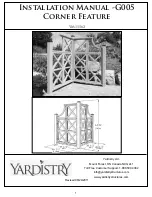
43
ENGLISH
WARNING
Do not refuel the machine near sparks, lighted ciga-
rettes or whatsoever fires.
Always shut the engine off before removing the tank
cap and wait till it is cool enough.
Before restarting the machine, check that there are
no oil or fuel leaks; otherwise, clean them thor-
oughly and wipe them. If some gasoline is spilled
on the machine parts, wipe it immediately. The fuel
tank shall not be filled up to the full capacity of the
tank to prevent overflow.
After sending away bystanders within the machine
working range, if any, start the machine according to
the following procedure:
1) Shift the accelerator lever to “START” and check
that the on-off switch in on the “ON” position (for
those engines equipped with it)
2) Go to the machine side, take the engine recoil
rope and slowly pull it till you feel its stop. Then,
pull the rope strongly and rapidly.
For the Diesel engines equipped with
decompressor, instead, before pulling the rope
strongly and rapidly, shift the decompression le-
ver, “Valve lifter” by pushing it down (lever with
knob place near the injector) that will lift automati-
cally once the engine is started. The engines are
equipped with recoil starter that allows pulling the
rope but that when the engine starts, it discon-
nects so to avoid pulls and kicks back for the op-
erator.
3) Release the rope while it rewinds. In case the en-
gine does not start, repeat the operation.
After starting the engine, set the accelerator lever to
half stroke and let the engine run for a few minutes to
warm up.
During the first working hours, do not use the ma-
chine at its max capacity. Do not exploit the engine
too much.
The Minitransporter does not have a single lever for
selecting the speeds and for engaging the clutch, but
it has 3 different levers that simultaneously select the
speeds and engage the clutch
Therefore, to move forward or rearward, you just have
to operate one of the three 3 levers designed to this
purpose and the machine will start to move in the
selected speed.
(
What is written in the following text refers to Fig. 4).
The levers 1 and 2 for the forward speeds and the 3
for the reverse speed are actuated from the top to the
bottom as shown by the arrows.
By pushing down the lever 1, the machine starts to
move in the 1
st
speed, by releasing the lever 1 this
goes back to its initial position and at this point it is
possible to actuate the lever 2: the machine moves,
therefore, in the 2
nd
speed.
By releasing the lever 2 that goes back to its initial
position, it is possible to actuate the lever 3 by pull-
ing it towards ourselves (see the arrow), and the
machine will move in the reverse speed.
Some special devices avoid the simultaneous engag-
ing of more than one speed (both forward and rear-
ward)
If no lever is used, the machine remains blocked and
this represents a very good safety condition (all gears
are equipped with deadman’s levers).
WARNING
Before starting the engine it is necessary to check,
with the levers in the stop position, if no belt
is stuck on its own pulley. In order to check this,
you just have to pull the rope of the recoil starter,
let the engine run for a while and pay attention that
the machine makes no movement either forward or
backward.
4.2.1 STEERING
The steering of the minitrasporter takes place by op-
erating the levers 4 and 5 respectively. Such levers
are equipped with deadman’s lever, and if released,
they go back to the original position.
In order to steer rightward, you should use lever 5
and in order to steer leftward you should use lever 4,
more or less strongly, depending on the required
steering speed.
So the steering takes place because one of the two
crawlers stops or runs slower than the other one, so
that by strongly pulling the two levers 4 and 5 simul-
taneously, the machine will stop.
Summary of Contents for F 400
Page 4: ...4 1700 900 700 Fig 2 A Fig 3 5 4 1 2 6 3 7 ...
Page 5: ...5 Fig 4 1 2 3 A B 6 4 5 1 4 2 Fig 5 Fig 6 1 3 5 ...
Page 6: ...6 2 A B 1 Fig 6 a Fig 7 AR AM P K AT R F1b V L G1 G2 P5 P2 P3 P4 Q P1 F GR ...
Page 9: ...9 Fig 13 1 6 4 3 2 2 5 Fig 12 F D1 M S A R RT V ...
Page 10: ...10 3 1 1 Fig 14 ...
Page 11: ...11 1 4 2 3 9 7 6 5 8 Fig 15 7 6 5 8 11 10 ...
Page 12: ...12 Fig 17 1 2 4 6 7 5 3 Fig 16 ...
Page 13: ...13 1 4 3 5 2 Fig 18 Fig 19 A A 9 10 9 6 5 2 2 1 7 3 4 8 13 11 12 F ...
















































